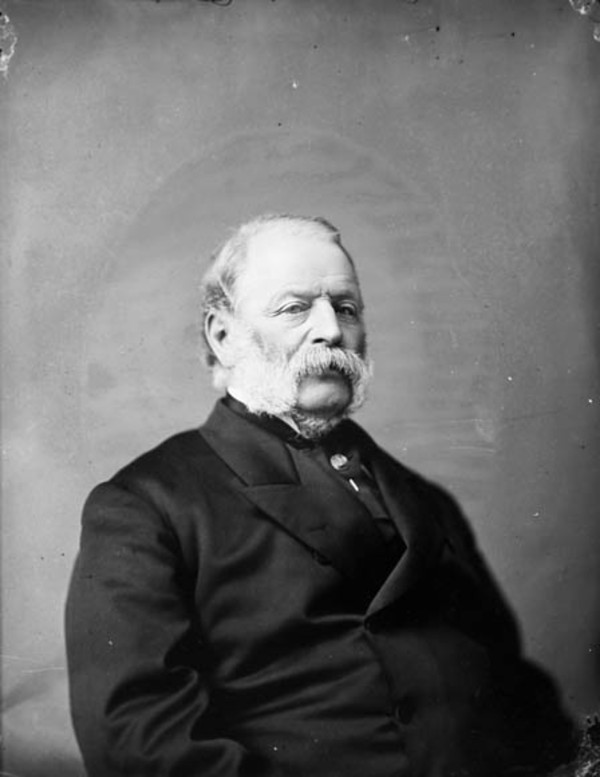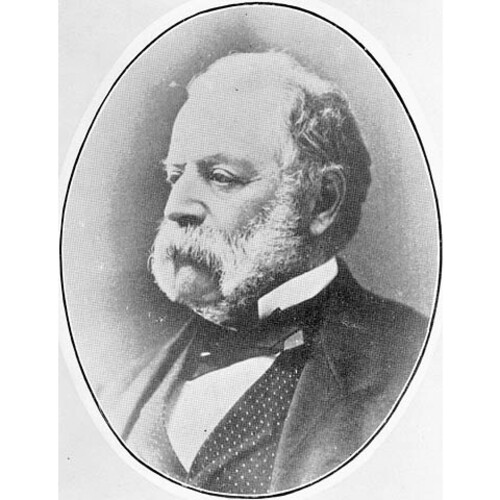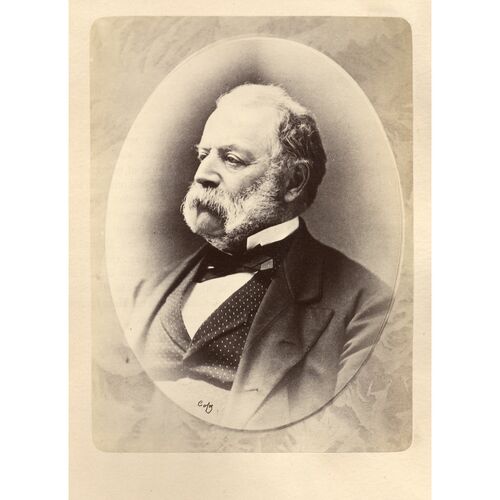WILSON, CHARLES, businessman, mayor of Montreal, politician; b. in April 1808 at Coteau-du-Lac (Soulanges County), L.C., son of Alexander Wilson and Catherine-Angélique d’Ailleboust de Manthet; d. 4 May 1877 at Montreal, Que.
Charles Wilson was a sort of microcosm of the Canadian population. Through his father, Alexander Wilson, a custom-house officer, he was linked with Scottish immigrants; through his mother, a d’Ailleboust, he had roots that were very “New France.” And when on 19 May 1835 he married Ann Tracey, a sister of Dr Daniel Tracey*, the founder of the Vindicator and Canadian Advertiser (Montreal), he joined the Irish group.
He quickly made a start in business. Thanks to his intelligence and perseverance, a hardware store he set up in 1834 prospered. He subsequently became one of the directors of the Scottish Provincial Assurance Company.
Wilson was a sturdy little man, quick of gesture, and with a face framed in sidewhiskers, who established himself firmly in the life and society of Montreal; he was a Catholic who secured a prominent place, along with the Unitarian Francis Hincks*, in the St Patrick Society, which had been founded in 1834. Both of them, with Lewis Thomas Drummond*, instilled in the Montreal Irish a sense of pride and an awareness of their strength. Wilson was elected mayor of Montreal by acclamation in 1851, then again in the two following years, and on 23 Oct. 1852 was appointed member of the Legislative Council. He was thus in a position to exert on his two friends – Hincks, who had become prime minister, and Drummond, the attorney general east – a political influence not underestimated by the government’s opponents.
On 24 Jan. 1852, in the debating hall of the municipal council at Bonsecours market, which had been inaugurated for the occasion as a town hall, Peter McGill*, one of Wilson’s predecessors as mayor, presented him with a full-length portrait of himself by the Quebec artist Théophile Hamel*. Wilson could then measure the extent to which public opinion had evolved in his favour since 26 April 1849, when the mob had surged towards his house to shatter doors and windows: the assent given to the rebellion losses bill had provoked violent demonstrations at Montreal, and Wilson, no doubt because he was a friend of Louis-Hippolyte La Fontaine*, had not been spared.
But Wilson was fated to experience again the tribulation of unpopularity, at the time of the Gavazzi affair. Did he, on the evening of 9 June 1853, order the detachment of the 26th Scottish regiment, which had been dispatched to Zion Church to assist the hard-pressed municipal police, to open fire on the crowd as it streamed out of the temple after listening to the speech of the ex-Barnabite Alessandro Gavazzi? The subsequent inquiry did not establish clearly who was the author of the fatal order, but Protestant journalists such as John Dougall* of the Montreal Witness persisted in accusing the mayor. On the morning of 2 August his full-length portrait, which hung in the hall of the municipal council, was found decapitated: in the canvas, in the place of Wilson’s head, was a gaping hole, probably made with the help of a razor fastened to the end of a stick or cane! And when, in September 1855, at Bishop Ignace Bourget*’s request, Wilson received the cross of commander of the Order of St Gregory the Great from Pius IX, the Protestant press resumed its accusations against the man responsible for the “St Bartholomew of Montreal.”
But Wilson had already left the mayoralty, having been replaced in this office in 1854 by Wolfred Nelson*. In May 1867 he was granted the title of senator and represented in the federal parliament the constituency of Rigaud. He died at Montreal on 4 May 1877.
[Robert [Philippe] Sylvain, Clerc, garibaldien, prédicant des deux mondes: Alessandro Gavazzi (1809–1889) (2v., Québec 1962), II, 392–423; this work, based on an exhaustive study of the primary sources, places Wilson’s actions as mayor in the context of a troubled and significant time in Montreal’s history. p.s.]
Thérèse Archambault-Lessard, “Alexandre et Thomas Wilson,” BRH, XLII (1936), 347–55.
Cite This Article
Philippe Sylvain, “WILSON, CHARLES,” in Dictionary of Canadian Biography, vol. 10, University of Toronto/Université Laval, 2003–, accessed December 29, 2025, https://www.biographi.ca/en/bio/wilson_charles_10E.html.
The citation above shows the format for footnotes and endnotes according to the Chicago manual of style (16th edition). Information to be used in other citation formats:
| Permalink: | https://www.biographi.ca/en/bio/wilson_charles_10E.html |
| Author of Article: | Philippe Sylvain |
| Title of Article: | WILSON, CHARLES |
| Publication Name: | Dictionary of Canadian Biography, vol. 10 |
| Publisher: | University of Toronto/Université Laval |
| Year of publication: | 1972 |
| Year of revision: | 1972 |
| Access Date: | December 29, 2025 |







